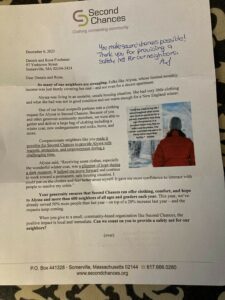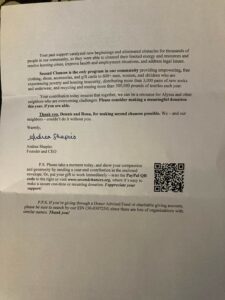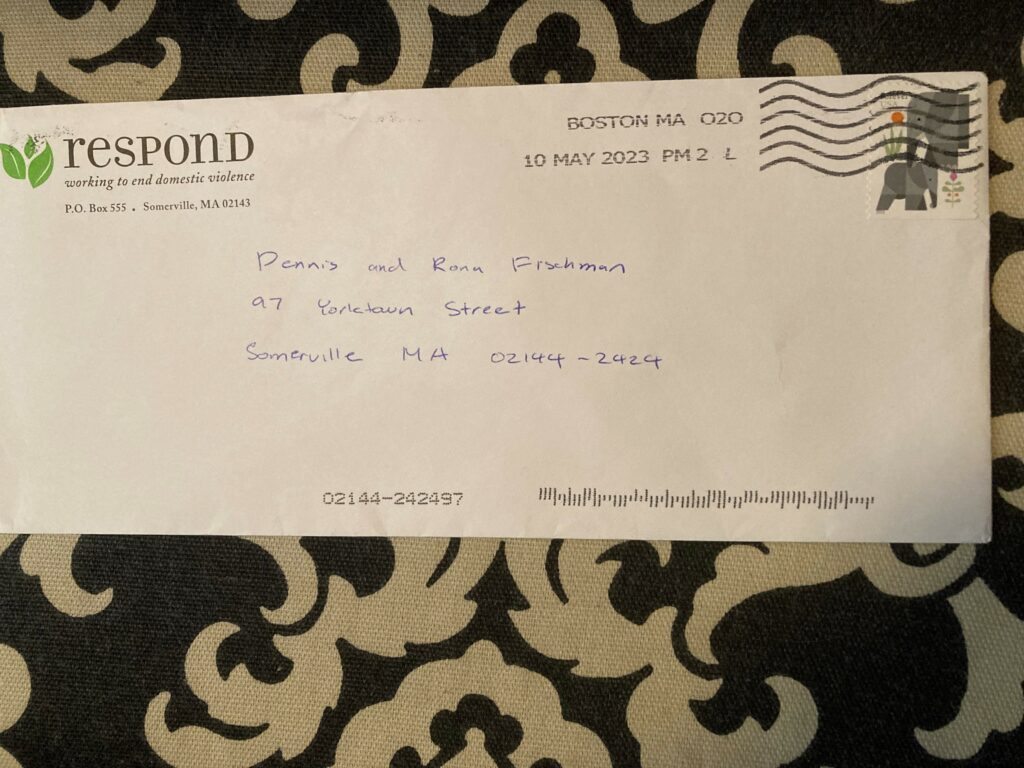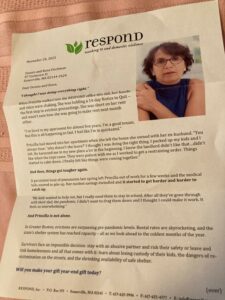In nonprofit fundraising, everything old is new again.
One of the best appeal letters I received at the end of 2023 was from Second Chances Inc., a local nonprofit that “reuses and recycles clothing, shoes, and accessories so that homeless and lower-income people feel confident and valued as they take their first steps toward brighter futures.”
 Second Chances did all the things you have to do to send out the ideal appeal letter.
Second Chances did all the things you have to do to send out the ideal appeal letter.
- They called my wife and me by name, not “Dear Friends.”
- They told the story of one person in trouble.
- They used a photo, quotes, bold and underlined text to break up the dreaded wall of text.
- They said you many times more than they said we.
These are all classic ingredients of a fundraising appeal that works.
Something old, something new
One other thing Second Chances did right, which regular readers of this blog will recognize: they used a P.S. The postscript (along with the salutation, photos, and bold text) is one of the first things that most potential donors will read when they receive your mail.
A postscript is not an afterthought. Actually, I suggest that writing the P.S. should be one of the earliest things you do when drafting your fundraising appeal! So, it’s vital to use that highly desirable space in your letter to make it more likely that the person reading it will donate.
How do you spur donations? One way is to drive home the message that you were telling in the main body of the letter. For instance, Second Chances could have referred back to Alyssa, the person who received the bag of winter clothing, whom they tell about earlier in the letter. They could have said something like, “There is someone else just like Alyssa who is shivering in the cold right now, and you can help her. Please make your donation today!” And that would have worked.
Second Chances chose a different way to make donations more likely. They made donating easy.
 If you look at the back of their letter, your eye will immediately get drawn to two things, the signature, and the little black box that looks a bit like a maze. Yes, that’s a QR code!
If you look at the back of their letter, your eye will immediately get drawn to two things, the signature, and the little black box that looks a bit like a maze. Yes, that’s a QR code!
QR codes have been around since the 1990’s but were never in widespread use until the outbreak of Covid in 2020.
Suddenly, the entire world sought quick and easy ways function without physical contact. QR codes were the perfect solution. The codes are free, easy to make, and easy to maintain. Almost everyone carries a phone with QR scanning capabilities. You could dine at restaurants and bars without touching a menu that’s been touched by other people, reducing the spread of germs. You could pay for items without touching cash or pushing buttons on a card reader. (from A brief history of QR codes)
Second Chances did not add a QR code just to look trendy! I am sure they thought it was a great way to make their paper fundraising appeal more interactive. For the donor, making that gift doesn’t have to mean typing the Second Chances URL into their web browser, navigating to the Donate page, and then going to PayPal. Just pull out your phone, and the next steps are automatic.
What is your nonprofit doing to use both time-tested techniques and new technology to help your donors decide to give, on the spot? Share on X



